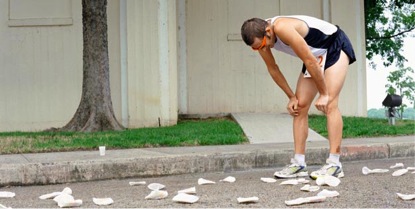Sport and Exercise Medicine: The UK trainee perspective, a monthly blog series
By Dr Khine Swe Win
I recently attended the British Association of Sport and Exercise Medicine (BASEM) spring conference, “The fatigued athlete” in Manchester. It provided the latest evidence in diagnosis, prevention and management of underperformance syndromes.
Unsurprisingly, the new IOC consensus statement on Relative Energy Deficiency in Sport (RED-S) was a discussion topic of interest at the conference. The RED-S replaces the previous term “female athletes triad” (a medical condition often observed in physically active girls and women, that involves three components: (1) low energy availability with or without disordered eating, (2) menstrual dysfunction and (3) low bone mineral density, (Mary Jane De Souza et al 2013)).
The new term recognizes the complexity of the condition’s pathophysiology and multisystem involvement, affecting both men and women. The background theory of RED-S is the imbalance in the energy availability and the energy expenditure, or misbalance between training load and recovery. Low energy availability can have serious implications for many body systems such as nutrient deficiencies, low immunity, risk of infections and illnesses, and chronic fatigue, resulting in short-term and long-term compromise of optimal health and performance.
Multiple monitoring tools have been used to detect early signs of fatigue and health decline in athletes. A good monitoring tool should be reliable, reproducible, standardized, sport-specific and provide immediate feedback. Of the many monitoring models, here are some examples that I have come across:
- Daily monitoring of rated perception of exertion (RPE), sleep hygiene, muscle soreness, fatigue level, readiness to train, attractiveness of training day, general health, mental wellbeing (POMS).
- Physical tests and examination such as range of movement, adductor squeeze test, FABER test, Functional movement assessment (SFMA), counter movement jump (CMJ).
- GPS data on duration, covered distance, speed, acceleration, total work, metabolic power.
- Physiological markers such as heart rate, heart rate recovery, heart rate variability.
- Monitoring by blood tests and biochemical markers.
The key is to effectively analyze data and utilize it to boost performance. Multiple factors enhance team performance. The sum of many little improvements or marginal gains can provide a big leap in performance.
Further points to highlight from the conference discussion include:
- Load can influence performance and hence, appropriate load management is crucial. Athletes should be exposed to different stimuli on a day-to-day basic and should avoid monotony of training.
- Establishment of recovery strategies within the team is important.
- It is essential that athletes have a balanced nutritious intake with a mixture of macro and micronutrients.
- Nutritional interventions can be considered for low immune athletes, such as Vitamin D level, high carbohydrate, whey protein, open window theory (post exercise recovery shakes), probiotics (illness prone athletes) and Colostrum (influencing the gut barrier).
- Sleep efficiency is slowly gaining its popularity in maximizing performance. The issue of sleep and its impact on performance was discussed recently by Dr Andy Franklyn-Miller in his research review blog (HERE)
- Athletes’ personal, environmental and emotional issues should be addressed efficiently.
- Dr John Roger discussed that the athletes should be “Happy, Healthy (heart rates normal), Hungry (appetite excellent) and Horny (libido in good working order) (4Hs)
- There are also other multiple factors that can influence performance, such as time zone transition, jetlag and altitude exposure.
I conclude by sharing Tom Lancashire’s thoughts, from an athlete’s perspective, that as core staff we should “know the athletes, understand the sport, and communicate and co-ordinate effectively within the team.”
Read more in BJSM:
*****************************************
Dr Khine Swe Win is a final year sport and exercise medicine registrar, undertaking her training in West Midlands deanery.
Dr James Thing co-ordinates “Sport and Exercise Medicine: The UK trainee perspective” monthly blog series.
